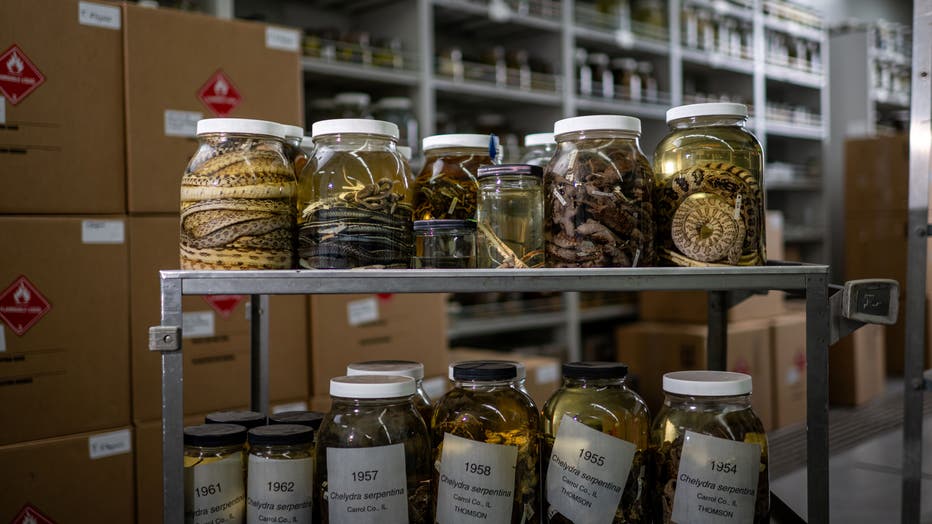University of Michigan now home to world's largest collection of snake specimens
A jar full of garter snakes preserved in alcohol, part of the roughly 45,000 reptile and amphibian specimens the U-M Museum of Zoology acquired recently from Oregon State University. Photo credit: Eric Bronson, Michigan Photography.
ANN ARBOR, Mich. (FOX 2) - For some, being in the presences of tens of thousands of dead snakes would be a nightmare. But for students at the University of Michigan Museum of Zoology, "It's like Christmas."
Drew Heur, an undergrad in the Ecology and Evolutionary Biology department, was opening a box full of sealed jars full of reptile and amphibian specimens stored in alcohol.
"Nice. So what we have here is Thamnophis elegans. It is one of many species of garter snakes found in the U.S. and this one is from California," he said, reading the first jar he pulled out.
The unboxing video was posted on the University of Michigan's YouTube account. It's part of the school's recent acquiring of 70,000 snakes that it will use to better understand how the species form, how reptiles and amphibians evolve, and why are there so many kinds of venomous snakes.
With its recent possession, the University of Michigan now maintains the largest collection of snakes anywhere in the world.
They arrived in more than 100 boxes and included jarred lizards, salamanders, newts, frogs, turtles in addition to the snakes. They'll be held at the school's Research Museums Center, which sits several miles off-campus.
MORE: Arctic grayling can now be fished in Michigan as state readies for depleted species' return
Dan Rabosky, a curator at the museum likened the facility as a "giant scientific instrument—such as a telescope or a particle accelerator."
"It's an active, vibrant place where people are asking all sorts of big questions about life on Earth and how we are impacting it," he said in a statement.

Jars of snakes preserved in alcohol at the University of Michigan's Research Museums Center. U-M recently acquired tens of thousands of additional reptile and amphibian specimens—including roughly 30,000 snakes—and now hosts the world's largest resea
About 45,000 specimens delivered to the museum are from Oregon State. According to a release announcing the move, the snake specimen collection is the culmination of a lifetime of work from two recently retired professors. It's also a symbol of the partnership between the two schools.
Most of the snake specimens are garter and water snakes.
"These are two powerhouse snake collections coming together to become something entirely new—a super-collection capable of doing things together that neither one could have done alone," said Alison Davis Rabosky, an associate professor in the U-M Department of Ecology and Evolutionary Biology.

